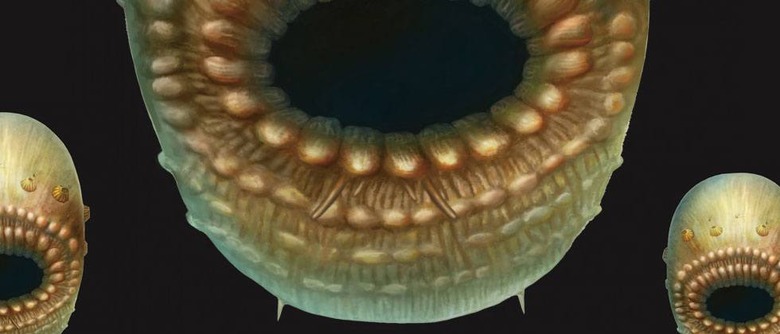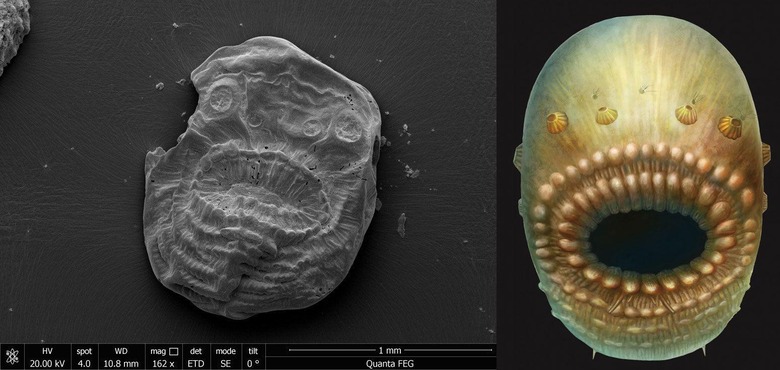Our Oldest Ancestor Looked Like A Tiny Bag Of Teeth
Hundreds of millions of years ago, a creature that looked like a miniature bag of teeth roamed the sea. This creature was around one millimeter in size and likely live at the bottom of the sea, scrounging for food between grains of sand on the seabed. "We think that as an early deuterostome this may represent the primitive beginnings of a very diverse range of species, including ourselves," said Simon Conway Morris, Professor of Evolutionary Palaeobiology and a Fellow of St John's College, University of Cambridge.
The creature turned up in a study this week, Saccorhytus coronarius, existed on this planet in the Peleozoic era. This odd beast was dated to around 540-million years before our modern age. The T-Rex, by comparison, popped up is just 67 million years ago, and 4-footed dinosaurs like Brontosaurus appeared around 155-million years ago. This bag-like creature is very, very old indeed.

Saccorhytus coronarius is said to have bilaterally symmetrical features – like we humans do. Saccorhytus coronarius also likely got around with tiny movements initiated by muscles under its thin, flexible skin. It had several openings that could have eventually evolved into gills over time – but for now, just one opening for food and waste.
In other words – what goes in, must come out, as no anus (or anything like it) appears on the creature. "If that was the case, then any waste material would simply have been taken out back through the mouth, which from our perspective sounds rather unappealing," said Professor Morris. All of this happened on a very, very tiny scale.

"To the naked eye, the fossils we studied look like tiny black grains, but under the microscope the level of detail is jaw-dropping," said Professor Morris. "All deuterostomes had a common ancestor, and we think that is what we are looking at here."
"Our team has notched up some important discoveries in the past, including the earliest fish and a remarkable variety of other early deuterostomes," said Northwest University's Degan Shu VIA Phys.org. "Saccorhytus now gives us remarkable insights into the very first stages of the evolution of a group that led to the fish, and ultimately, to us."
For more information on this topic, have a peek at "Meiofaunal deuterostomes from the basal Cambrian of Shaanxi (China)" as authored by Jian Han, Simon Conway Morris, Qiang Ou, Degan Shu, and Hai Huang. This paper can be found in the scientific publication Nature under code DOI:10.1038/nature21072 starting this week.
